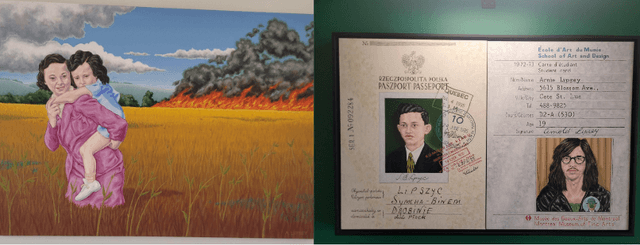The nostalgia of Florida’s welcome washes over me like a wave: the warm air brushing my face, the cold sand between my toes, and the loud laughter echoing across the beach. Like many other Canadian Jews, I have been going to Florida for as long as I can remember. When the cold winter approaches, I hear my neighbors packing their bags and loading their cars, getting ready for their 24-hour drive. One might think driving down to Florida is impossible, especially for those above seventy-five. Well, it is possible! If you can handle the near-death traffic experiences, loud screaming (out of love), and stops at (questionably good?) Kosher restaurants along the way, then spending winters in Florida becomes an annual tradition.
For many Jewish families arriving in Florida (usually Hollywood Beach, Miami, and Boca), it is not as seemingly peaceful as one might believe. Although most people who vacation in Florida have a relaxing and quiet time with their families, that is often not the case for Jewish families. Families like mine have their friends, family friends, great-great-grandparents, fourth cousins, and long-lost siblings there, too. It is often a giant reunion rather than a relaxing vacation. Massive dinner reservations, loud laughter, unavoidable fights, and delicious food are a part of the trip. My family ends up at the usual spots, like the Cheesecake Factory or the Rustic Inn Crabhouse, where they fit large parties and invite loud voices.
One could ask: how did so many North American Jews begin living in Florida, be it for the winter or year-round? Around the 1930s, visible antisemitism caused Florida to have a low Jewish population. In Miami, it was typical to see signs proclaiming "Gentiles Only" or "No Jews or Dogs." Throughout the 1930s, Jews were only allowed to reside south of Fifth Street in Miami, where they began buying hotels and apartments. The discriminatory regulations gradually relaxed in the 1930s and were repealed in 1949.
After antisemitism in Florida subsided in the 1940s, large numbers of Jews began to relocate to Miami, hoping to benefit from the city's prosperity, which flourished after World War II, when Miami became a military town. Jews began developing Miami by purchasing property and dilapidated structures at low prices. Miami Beach's Art Deco buildings from the 1930s and 1940s, designed, constructed, and maintained by Jews, are architectural marvels. By the 1970s, about 80% of Miami Beach's population was Jewish. Today, Florida's Jewish population exceeds 600,000.
Many Jewish grandparents become snowbirds for the winter, migrating to Florida for three to four months at a time. For these grandparents, including mine, it is harder to remain social in the winter, as driving becomes difficult and temperatures drop. Going to Florida with their friends and family allows them to chat all they want while tanning in the Florida sun (although my Safta refuses to do so without a hat).
Staying with my grandparents, I noticed a lot: the 6am wake-up times, a massive breakfast filled with fish, olives, challah, and bread (and them not allowing me to leave the table unless I ate everything off my plate), and mahjong poolside. I was reminded that this, too, will be my future, as an old Canadian Jew, and I am more than okay with that.
In many families, retiring in Florida has become a tradition that will continue for generations. Who wouldn't want to retire in a hot, fun, and social setting while your family back home suffers through a polar vortex? Regardless of how hectic a Jewish vacation to Florida may be, it is full of laughter and love, a commonality Jewish families share across generations and traditions.
Powered by Froala Editor






